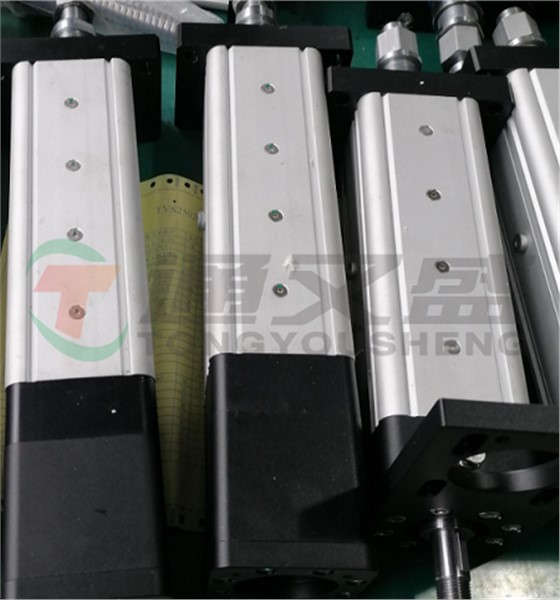To enable high-precision servo electric cylinders to perform at their best in 3C electronics manufacturing, it is also necessary to pay attention to implementation aspects such as installation, debugging, and maintenance, as well as their collaborative work with other equipment.
Key Points for Installing High-Precision Servo Electric Cylinders:
During the installation of high-precision servo electric cylinders, first of all, ensure that the installation environment is clean and dry to prevent impurities such as dust and moisture from entering the interior of the high-precision servo electric cylinders, which may affect their performance and lifespan.
When installing high-precision servo electric cylinders, operate strictly in accordance with the requirements of the product instruction manual to ensure the accuracy and firmness of the installation position. For some application scenarios with high precision requirements, it is also necessary to precisely level and fix the installation base to ensure the stability of the high-precision servo electric cylinders during operation.
During the installation process, be careful to avoid damaging key components of the high-precision servo electric cylinders, such as the piston rods and lead screws. At the same time, ensure that the connection between the motor and the high-precision servo electric cylinder is firm and reliable. For example, when using a coupling for connection, ensure that the concentricity and perpendicularity of the coupling meet the requirements to avoid damage to the motor or the high-precision servo electric cylinder due to improper connection.

Key Points for Debugging High-Precision Servo Electric Cylinders:
Debugging is an important link to ensure the normal operation of high-precision servo electric cylinders.
Before debugging the high-precision servo electric cylinders, carefully check and set various parameters of the high-precision servo electric cylinders, including the control parameters of the motor, the stroke limit of the high-precision servo electric cylinders, the speed limit, etc.
During debugging, a low-speed debugging should be carried out first. Observe the operation status of the high-precision servo electric cylinders and check whether there are abnormal vibrations, noises, or jams.
After the low-speed debugging of the high-precision servo electric cylinders is normal, gradually increase the speed for high-speed debugging.
During the debugging process, pay close attention to the operation data of the high-precision servo electric cylinders, such as current, voltage, temperature, etc., to ensure that these data are within the normal range.
At the same time, it is also necessary to test and adjust the positioning accuracy of the high-precision servo electric cylinders. Through repeated testing and fine-tuning, ensure that the high-precision servo electric cylinders can meet the high-precision requirements of 3C manufacturing.


